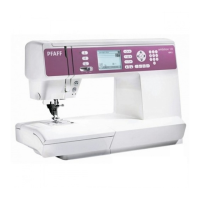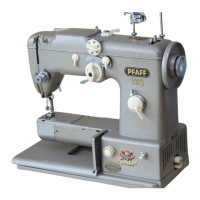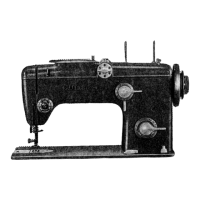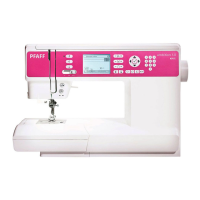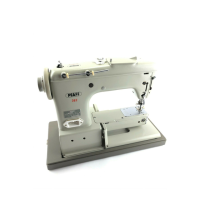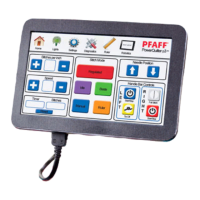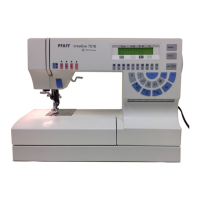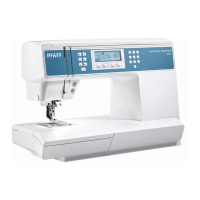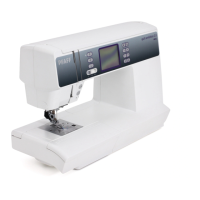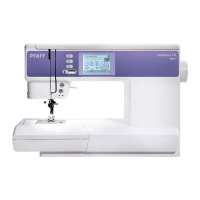SEWING – 29
3–Thread Overlock, Wide (and Narrow)
For sewing two layers of stretchy fabric or overcasting a single layer of light to medium fabric.
Use heavier threads in the loopers to create decorative edges.
Note: Use the right needle instead for a narrow stitch. Recommended thread tension settings within
brackets in the chart.
NORM/
TIGHT
N/R
THREAD TENSION
Left 1.0~1.5 3 NORM N - 3 (-) - (3) 3 (3) 3 (3)
3-Thread Narrow Edge
For sewing two layers of stretchy fabric or overcasting a single layer of light fabric. Popular for
creating decorative tucks. Use decorative threads in the loopers and regular thread in the nee-
dle. Use different colors in the loopers to get an interesting effect.
Note: Not recommended for heavy weight fabrics.
NORM/
TIGHT
N/R
THREAD TENSION
Right 1.0 R NORM R - - 4 1~3 3
3–Thread Rolled Edge
For edging lightweight fabrics. It gives a nice nish on silky scarves, pillow rufes and napkins.
For a beautiful rolled edge, thread the loopers with a decorative lightweight thread, such as 40
weight rayon, for a beautiful satin edge and the needle and lower looper with lightweight reg-
ular thread.
Note: Not recommended for heavy weight fabrics.
NORM/
TIGHT
N/R
THREAD TENSION
Right 1.0 R TIGHT R - - 3~4 1~3 3
3–Thread Picot Edge
Increased stitch length will form a picot edge on your fabric. This edge is a nice way to give a
decorative nish to wedding or bridesmaid dresses.
NORM/
TIGHT
N/R
THREAD TENSION
Right 1.0 3-4 TIGHT R - - 2-4 3 3-4
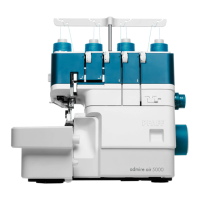
